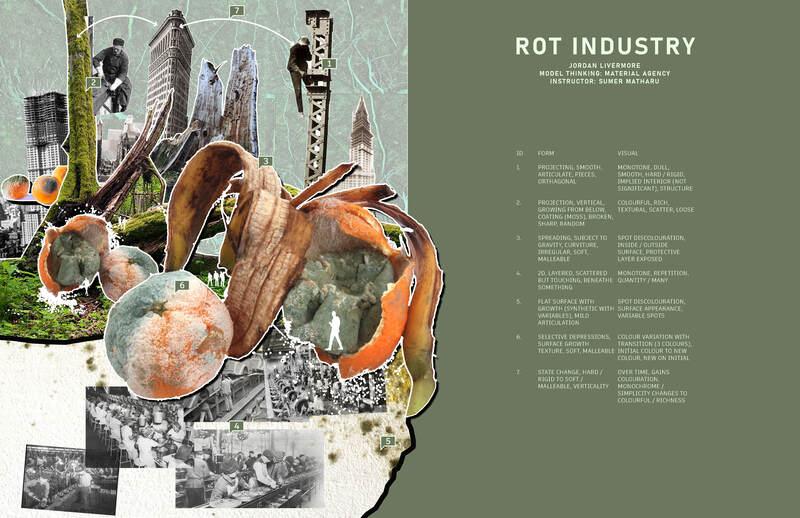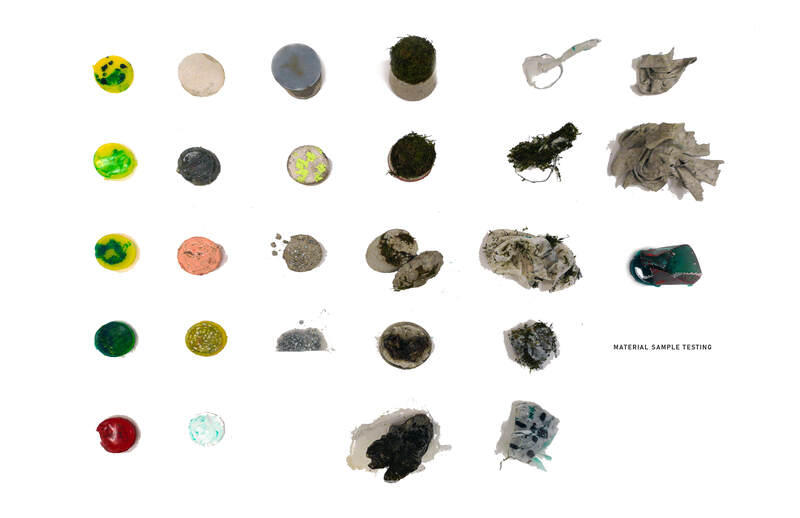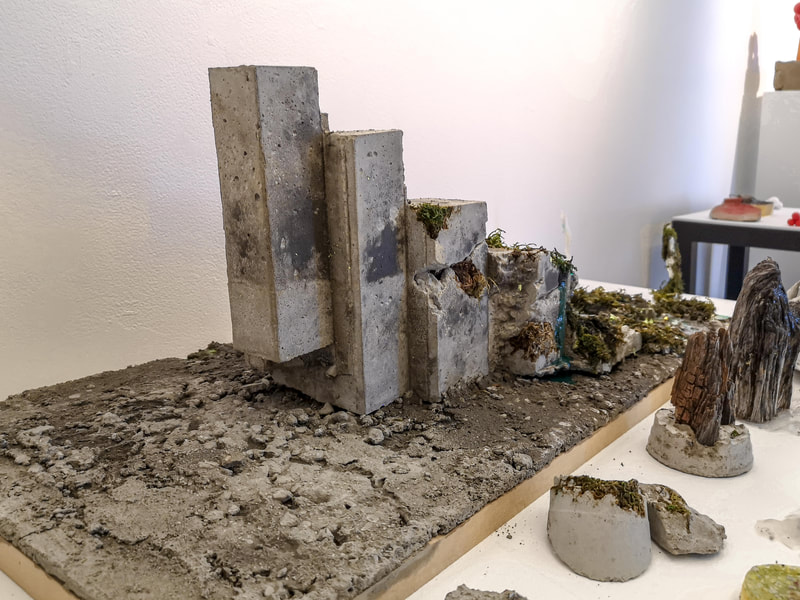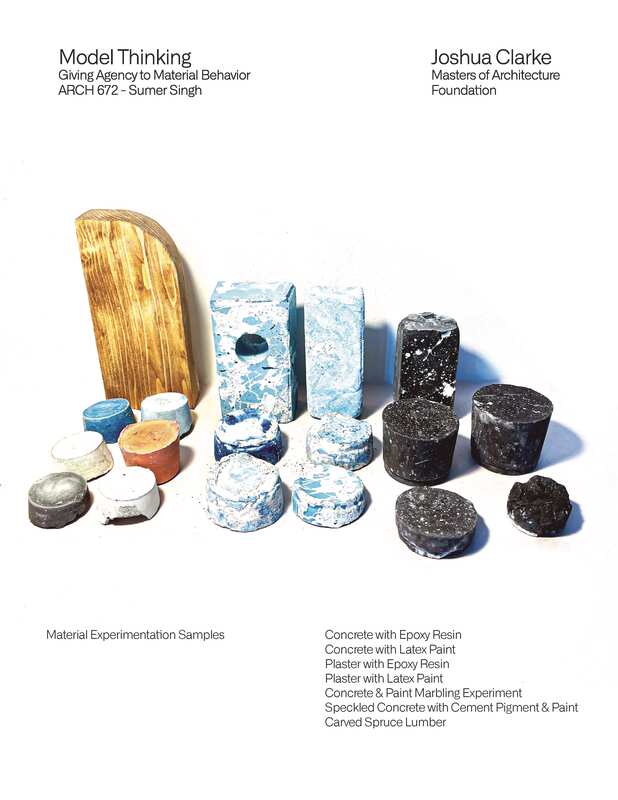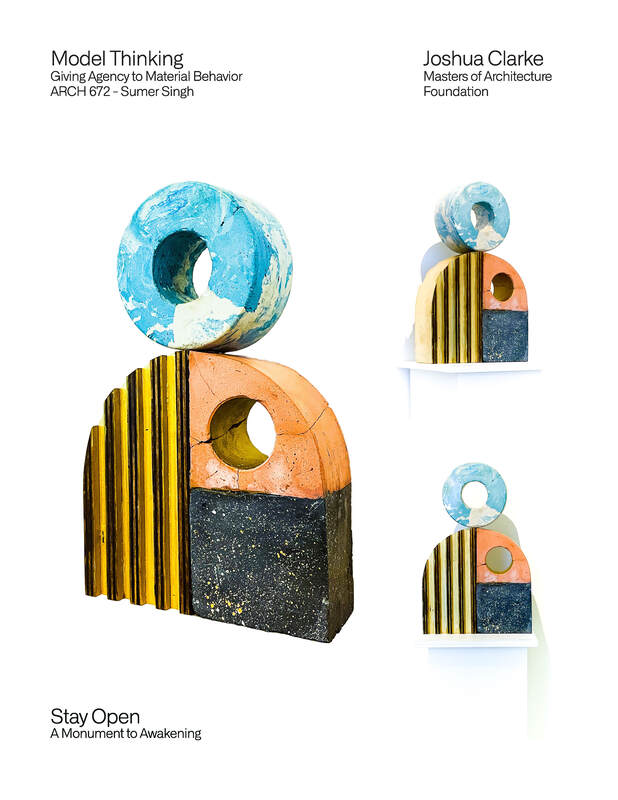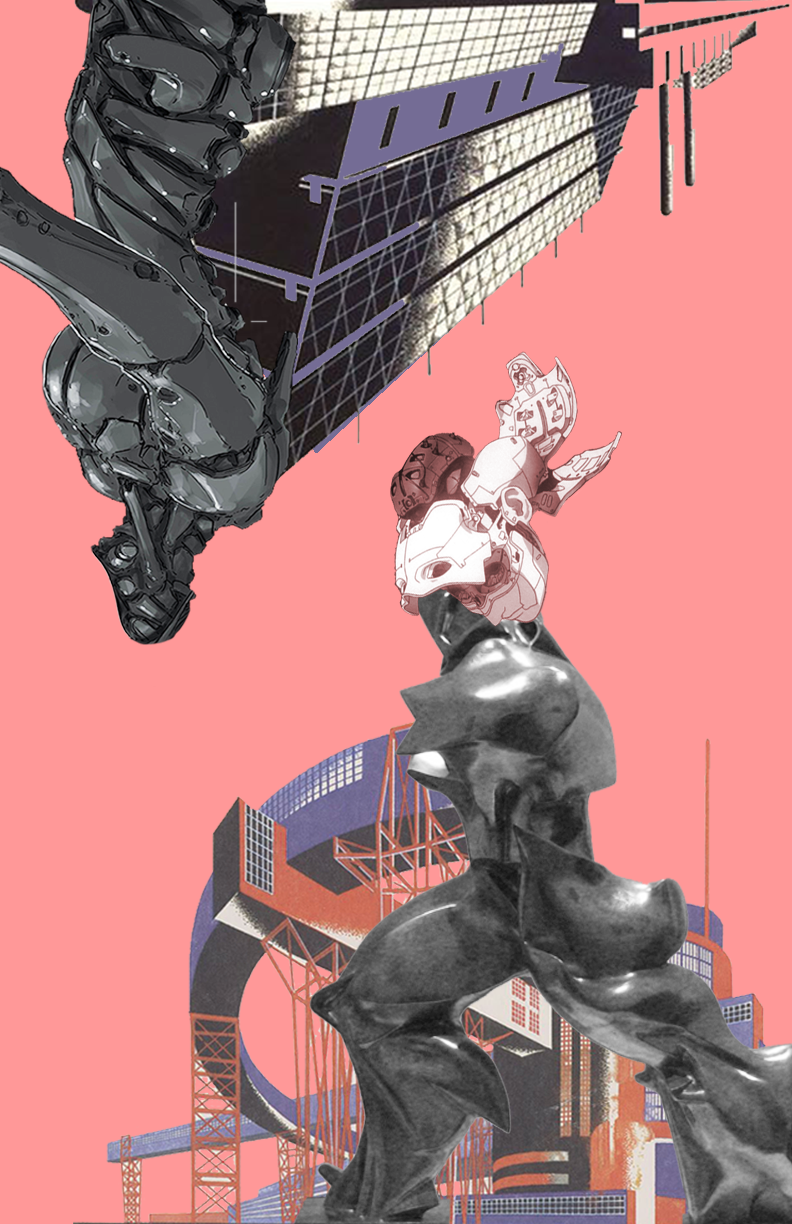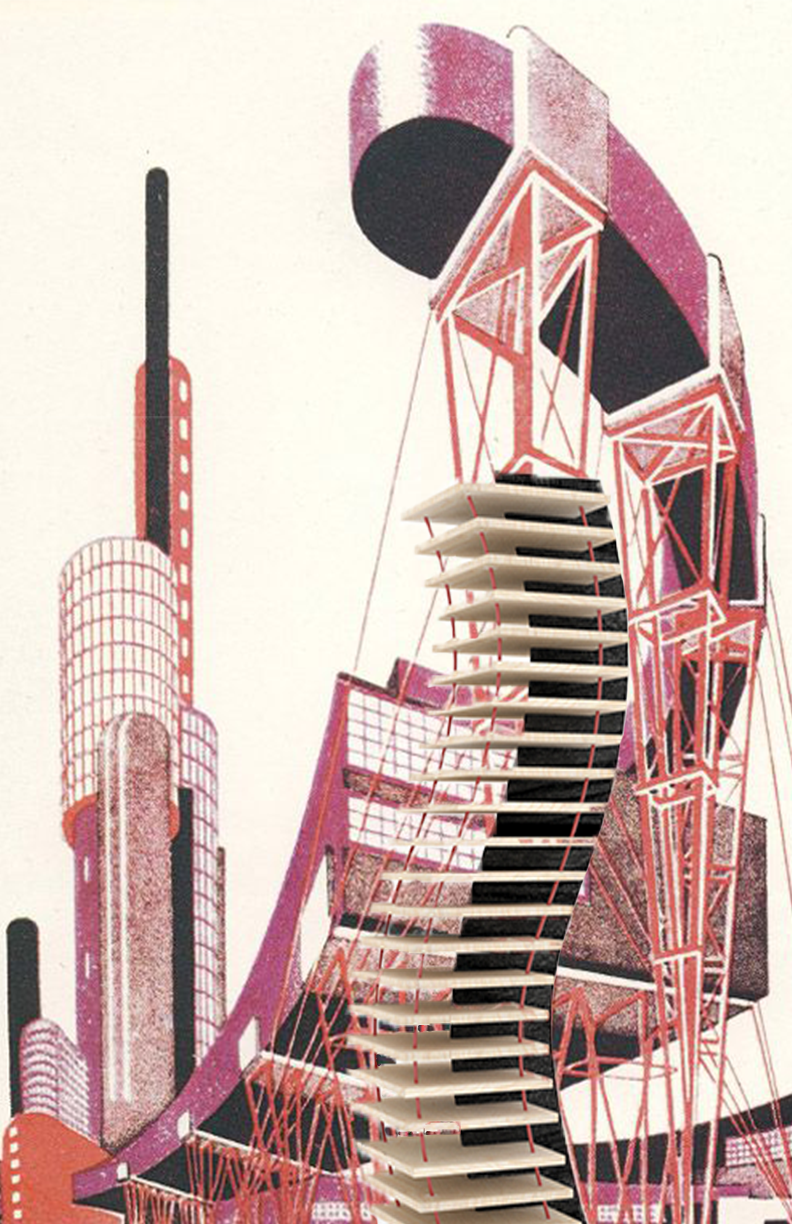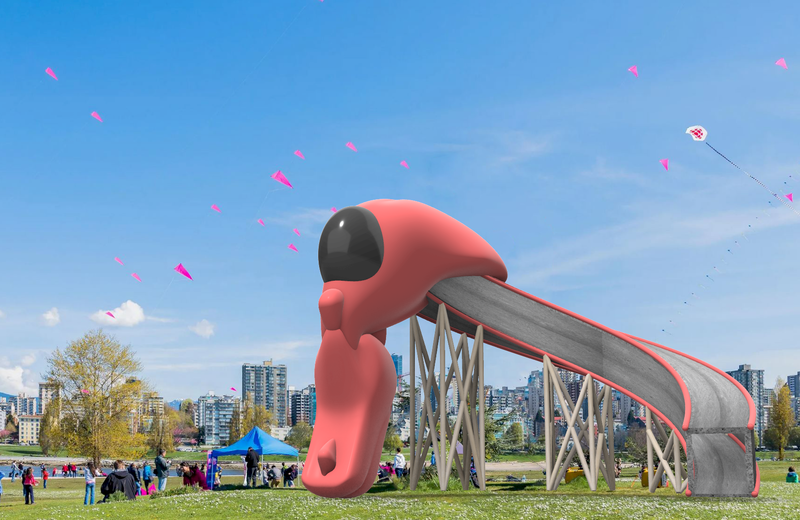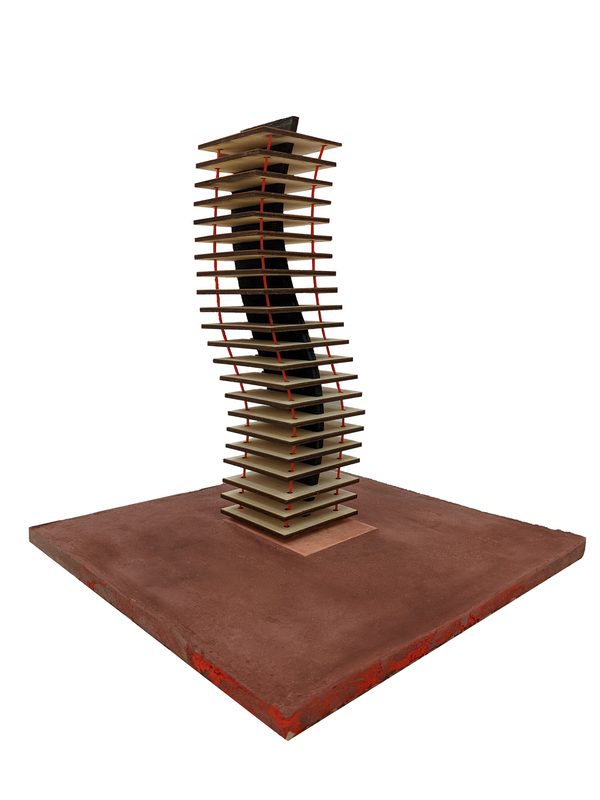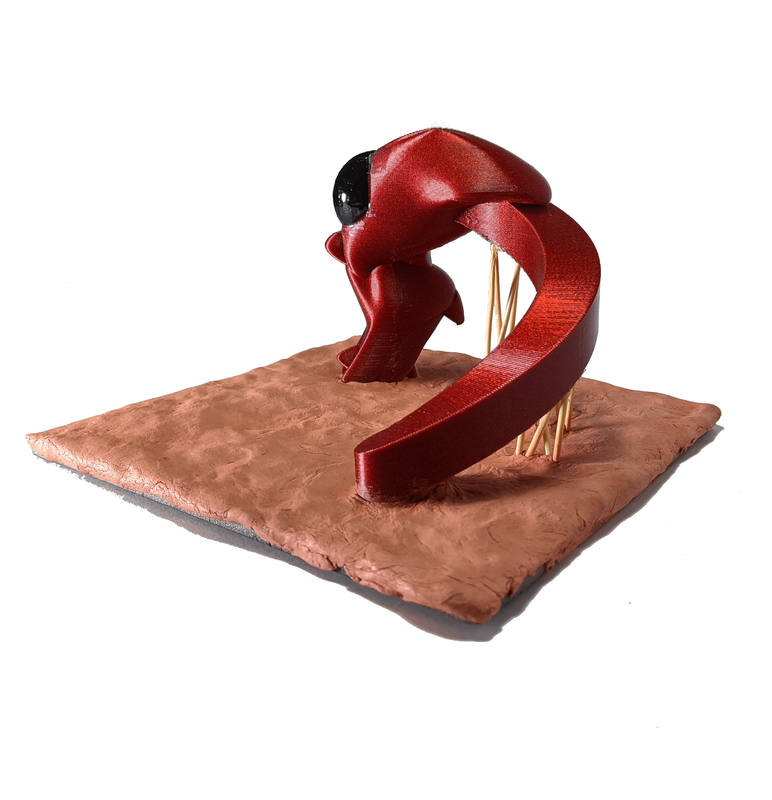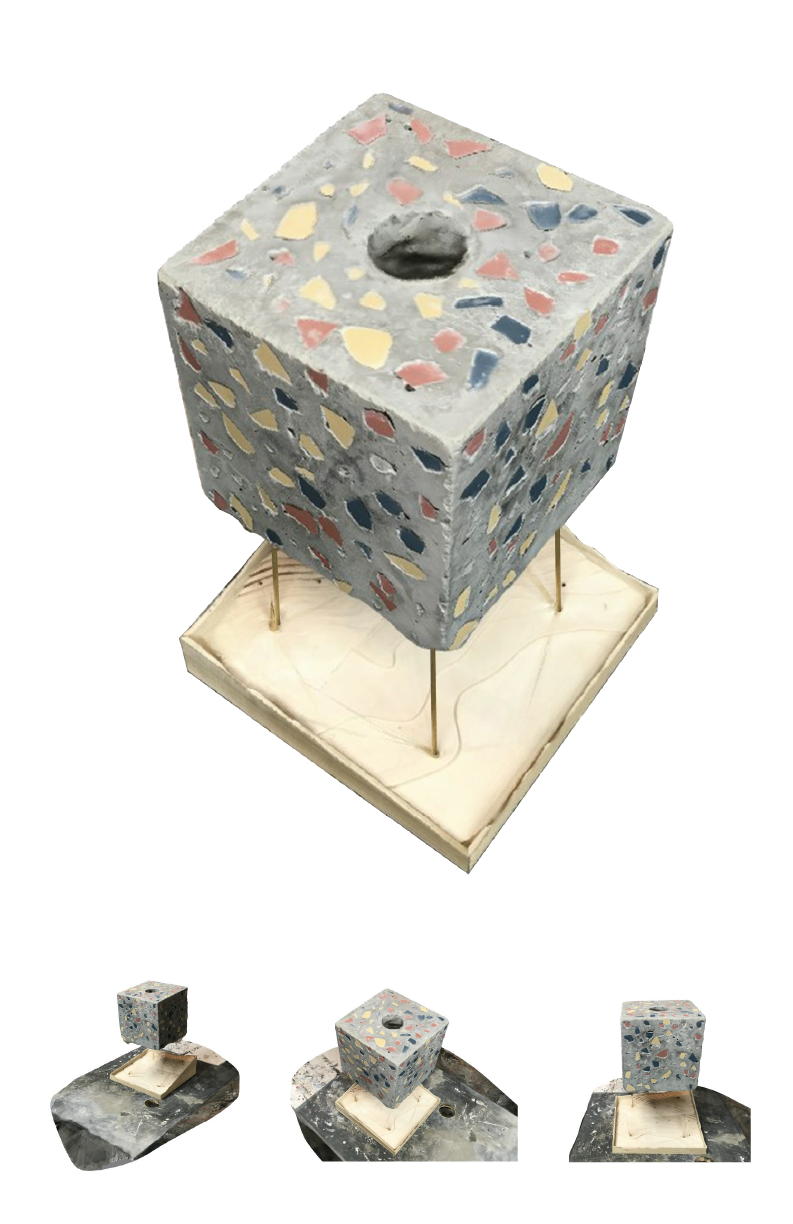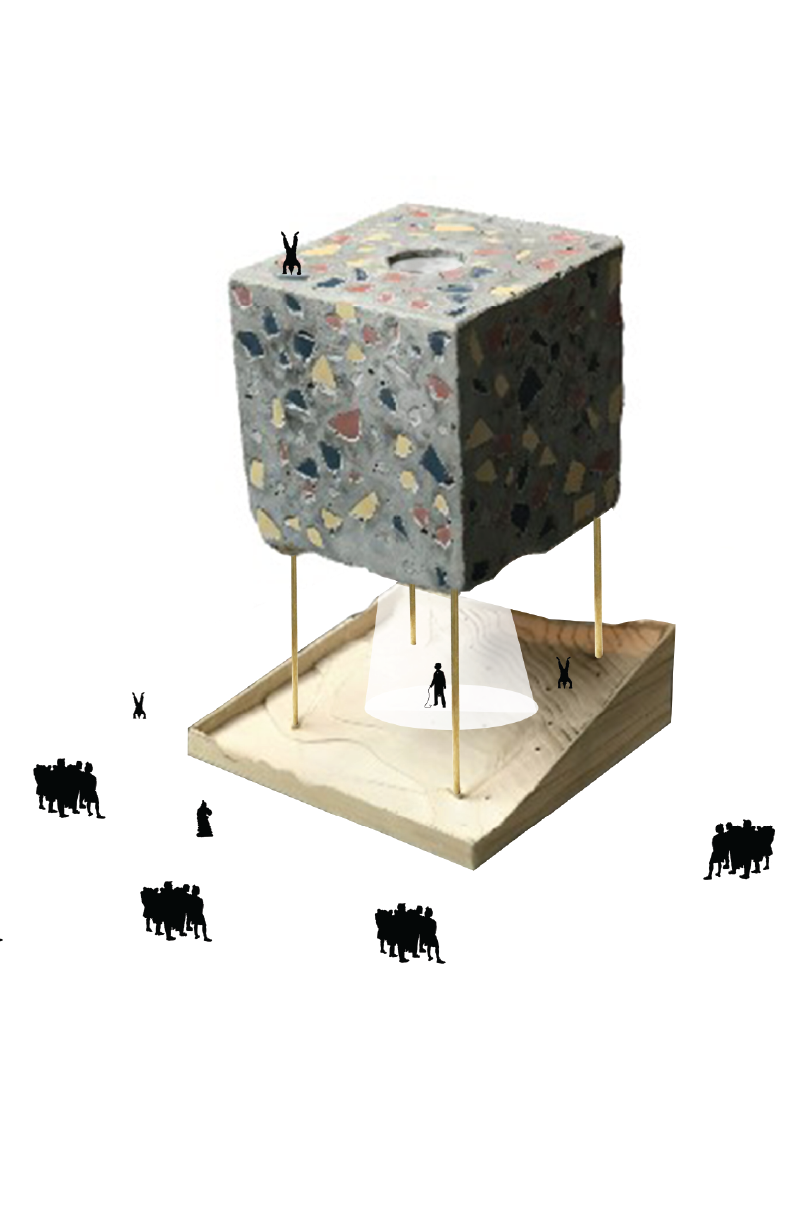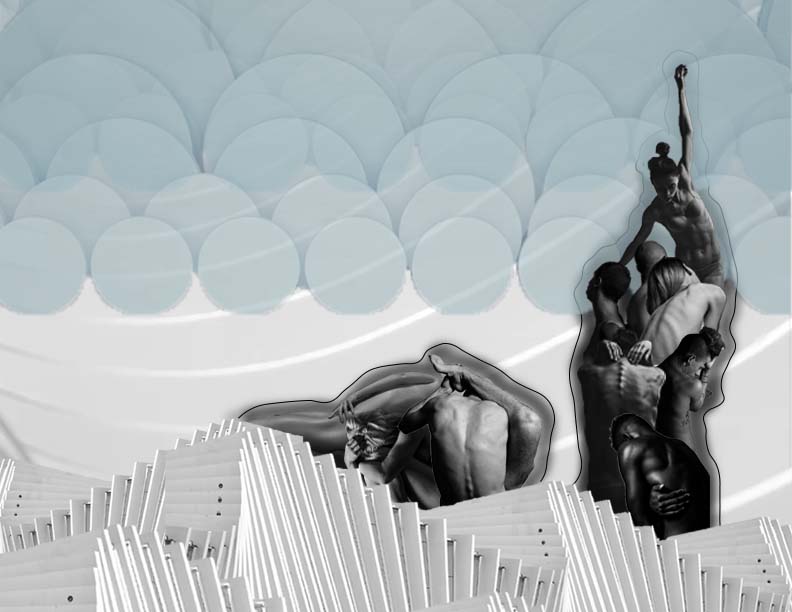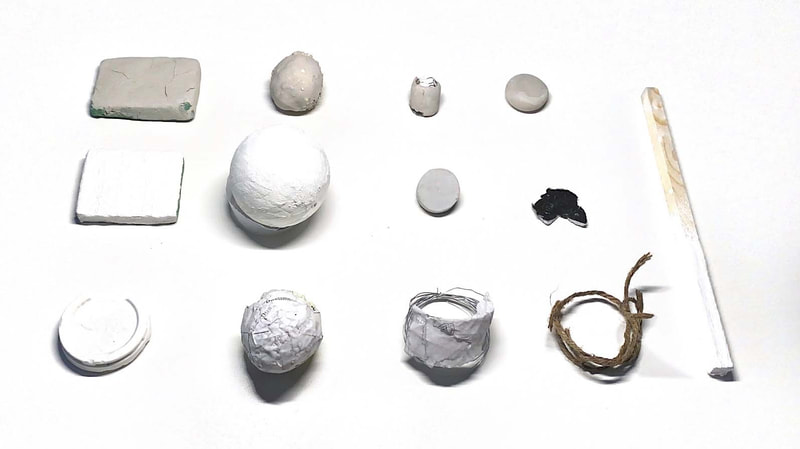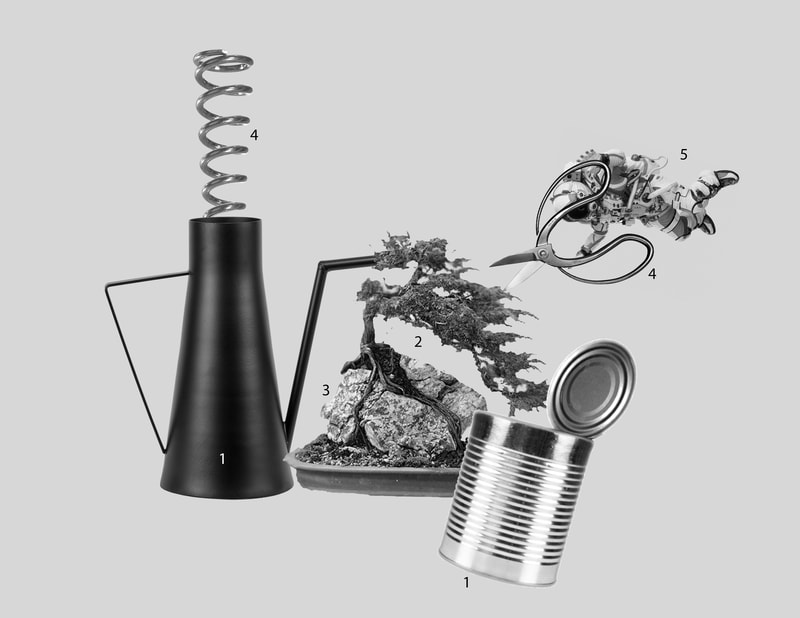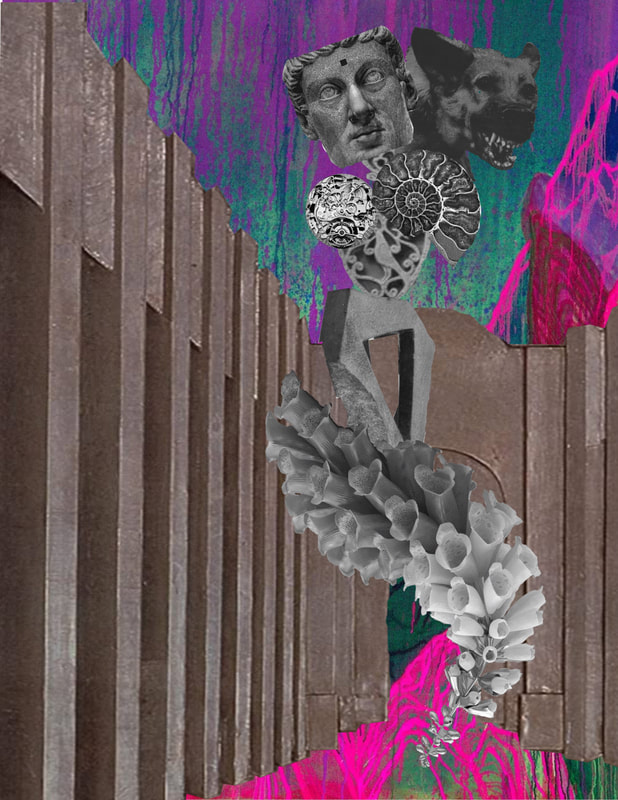Model Thinking: Giving Agency to Material Behaviour
|
University of Calgary, Masters of Architecture, School of Architecture, Planning and Landscape, Fall 2021
Instructed by Sumer Singh Students Klara Biernacki Jordan Bussiere Joshua Clarke Bushra Javaid Josh Joshnson Dolan Kilback Steven Lamothe Jordan Livermore Joshnson Luong Brendan Webb Julian Zwack |
Model Thinking provides a design method to depart from traditional physical model making as a purely representation tool. It rejects the deep-rooted hierarchy between the designer and materials, and gives value to cohesive design thinking. It does this by giving agency to material behaviour as a decision maker, rather than an outcome of a design exercise. Physical model making is an essential part of design education, and this course seeks to harness material behaviour to extract rational information from abstract sensations.
Students will be introduced to multi-material thinking, and related digital processes to create cyber-physical Models. Prerequisites include a working knowledge of Rhino/Grasshopper, preinstalling Unity (no experience required), and safety training completed at the SAPL workshop. This course is suitable for Architecture and Landscape Architecture. The teaching method is lecture and studio based, with a focus on skills-building via technical and theoretical content. Assignments shall be provided in class, and the outcome will include physical and digital content. Over the course of 5 days, each student will be introduced to multi-media manipulations and learning to approach their physical explorations as part of the design process. After a brief lecture and discussion on traditional model making, the students will be introduced to Cadavre Exquis (Exquisite Corpse) collaging as an avenue for materiality and design thinking. This will quickly pivot into a materials exploration workshop where students will be introduced to materiality at various scales, including a hands-on exercise. Next the students will be introduced to post-digital workflows of bringing physical models into digital space (eg. Photogrammetry and Augmented Reality). The final part of the course will include the design, development and creation of a cyber-physical artifact(s) that will be produced and experienced using the techniques learnt in the first few days. As a group, the students will set up a brief exhibit and a presentation on October 8th (location TBD). The Artifact Design and Development may be done individually or in groups (after discussion with the instructor). The methodology behind this block week course is to pursue multiple avenues of design thinking with a focus on giving agency to material behaviour as part of the design process. |
Jordan Livermore
Joshua Clarke
Julian Zwack
Jordan Bussiere
Bushra Javaid and Steven Lamothe
Klara Biernacki
Dolan Kilback and Johnson Luong
Josh Johnson
|
